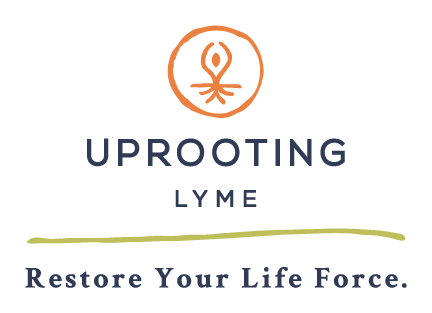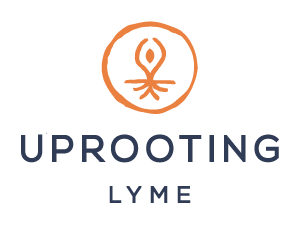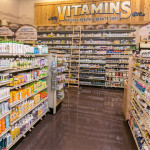
A Natural Approach to Lyme Prevention & Treatment
As experts in natural Lyme disease treatment, we want you to be empowered with the know-how to handle tick bites when they occur and actively take steps to assess, prevent and prophylactically treat Lyme and tick-borne infection with natural methods. This article provides proactive steps and guidance for making decisions about herbal treatment for Lyme disease, and whether you should take antibiotics given the particular circumstances.
For starters, the best medicine is tick bite prevention.
3 Tips for Natural Tick Bite Prevention
- Ticks are scent-driven insects, so strong smelling repellants are your best bet. When enjoying the outdoors, use a natural, essential-oil based repellent such as the Welcome to the Woods Insect Repellent Lotion or Spray. These repellants are chemical free and rich in phototherapeutic properties that both prevent insect bites and nourish the skin without unwanted toxicity.
- Upon returning home, change out of your clothes and put them into the dryer for 40 minutes. This kills hard to find ticks that may be lurking in your clothing.
- Shower or bathe yourself using a rough loofah-type sponge. After drying off, place dabs of clove essential oil directly on a few “hot spots” of the body such as the nape of the neck, waist, and backs of the knees, and anyplace you remove a tick from your body.
We find that people who follow these few basic steps almost never suffer infectious tick bites. However, even when we do all the “right things” to prevent a tick bite, it still can happen. If it does, here’s what to do:
Tick Bite First Aid
- Remove the tick with tweezers by grabbing hold of the head of the tick (not the body) as close to the skin as possible and lifting straight up and out. If the tick is on a baby or child, or on a particularly sensitive body part (sex organs or eyelid for example.), we then recommend the Q-Tip tick removal method.
- If the tick is still whole, you may send it for testing of infectious diseases at: https://www.tickreport.com/. If the tick is free of disease, then you don’t have to worry about seeking treatment. If it did contain disease, then we recommend following the “Option 2 High Risk” protocol below.
- In the meantime, place clove essential oil directly onto the tick bite and beyond the border of any redness. Do this 2-3x / day until signs of inflammation (redness, itching) disappear. It is a strong, penetrating broad-spectrum antimicrobial right where you need it most. In our experience, this alone eradicates tick-borne disease before the bacteria have a chance to take hold and create symptoms or illness in the body.
The next level of prophylactic treatment involves taking herbal medicines orally to prevent and treat potential infection. Below you’ll find 2 levels of protocol, one for low-risk scenarios, and one for high-risk scenarios. This differentiation will help you avoid the pitfalls of under- or over-treating yourself given your particular considerations (a holistic approach acknowledges that every individual situation is different!).
Lyme & Co-Infection Prevention & Treatment – Option 1 (Low Risk)
Low risk scenarios include the following:
- The tick wasn’t attached for long and there is minimal immune response (redness, itching or swelling) at the site of the bite;
- Clove oil was applied and there are no symptoms;
- You have a strong immune system and a relatively clean lifestyle;
- You have no history of Lyme-Borreliosis, tick-borne infection or other chronic infectious illness in your past.
In such cases, for additional Lyme disease (and co-infection) prevention beyond applying clove essential oil topically, I recommend taking the following:
- Colloidal Silver at 1 teaspoon / 2x / day +
- Exterminator tincture at 1 teaspoon / 2x / day taken together in 2 oz. of water. This is a broad-spectrum antimicrobial combination and therefore supports your immune system to eliminate a range of possible tick-borne infections.
Continue this regimen for 4 weeks; if no signs of infection occur, you should be in the clear.
At 6 weeks post-bite, you can opt to get a Western Blot blood test and see if there are any positive bands. If there are, follow the protocol for the High-Risk Scenario (below) and consider taking pharmaceutical antibiotics.
Lyme & Co-Infection Prevention & Treatment – Option 2 (High Risk)
High risk scenarios may include any of the following:
- The tick was well attached, and there is a strong immune response at the site of the bite (lots of redness, itching, and possibly swollen or purplish in the center);
- You didn’t see the tick, misinterpreted the bite to be a spider bite, cellulitis, poison ivy (etc.) and thus no immediate topical treatment wtih clove essential oil was applied to the bite;
- You feel run down, have a weaker immune system, have a history of Lyme disease, auto-immunity or other chronic infection;
- You have a lifestyle that may leave you vulnerable to chronic infection (high stress, poor sleep, poor diet, etc.);
- There are symptoms occurring that may be attributed to early Lyme disease (such as feeling fatigued, inflamed, or achy).
In such cases, a more potent Lyme disease and co-infection natural treatment protocol is recommended, which includes the following:
- Spiro Upward Liposomal Essential Oil Remedy at 2 Tablespoons / 2x / day; essential oils are the most potent form of antimicrobial plant medicine. When taken in liposomal form, they are safe and highly effective!
For extra antimicrobial action, take with:
- Exterminator Tincture at 1 teaspoon / 2x / day. These remedies may be taken at the same time, preferably 30 minutes or more away from food.
If you need creative ideas for taking these somewhat bitter and spicy remedies, check out our best advice for masking the taste and aiding the ingestion of herbs.
Tips Regarding Testing for Lyme & Co-Infections
The ELISA test is extremely unreliable. Always request the Western Blot when testing for Lyme-Borreliosis.
Following a tick bite, the Western Blot test cannot reveal the presence of infection until approximately 6 weeks post-bite, so there is no point doing blood work until after this amount of time has passed. In the meantime, taking the herbal regimen we recommend is a great way to support your immune system in fighting any infection that may have been passed on to you from the tickbite.
The Western Blot is approximately 65% accurate, so don’t rely solely on any blood test to decide definitively whether you have Lyme disease. Furthermore, there are numerous co-infections (similar diseases that can infect the body at the time of a tick bite) that each require distinct testing and clinical evaluation.
It is an unfortunate reality that testing for Lyme-Borreliosis and some co-infections is very unreliable. True diagnosis can be made by a knowledgeable health practitioner who will evaluate your signs, symptoms, bloodwork, and history to give you accurate feedback and direction for further diagnosis and treatment.
If you are considering taking pharmaceutical antibiotics in addition to the herbal medicines, you will find some additional thoughts for guiding that decision below.
When To Take Antibiotics
The Uprooting Lyme approach seeks to minimize antibiotic use. Excessive use of antibiotics is harmful to the health of individuals and the planet, and leads to antimicrobial resistance, wherein the antibiotics no longer work effectively when you need them. For this reason, we do not recommend courses of pharmaceutical antibiotics for prevention in most cases.
Whether or not to take antibiotics is a personal choice. In our clinical experience the best outcomes are born out of each person taking into consideration your personal history, constitution, past response to antibiotics, and ultimately doing what feels most aligned for your body (i.e., trust your instincts!).
The most compelling reasons to take antibiotics in addition to the “High Risk” herbal regimen described above include:
- You develop a Bull’s Eye (target) or other type of rash at the site of the bite or elsewhere on the body;
- You develop a fever, fatigue, aches, swollen glands, or any other symptom that doesn’t have a clear cause (and therefore may be due to tick-borne infection).
If you do decide to take antibiotics, be sure to continue taking the herbal regimen described above + Saccharomyces boulardii probiotics. The combination of herbs and essential oils + antibiotics will be much stronger than any one of them alone, and the herbs will help prevent the occurrence of persister bacteria, wherein a drug-resistant portion of the bacterial population remains and regrows after the course of antibiotics is complete.
If you have a confirmed case of Lyme disease, the antibiotics may be taken for 3-6 weeks. The herbals should be continued for 2 months after all symptoms disappear and you are feeling all better.
If you have questions or would like a clinical consultation to determine your diagnosis and/or seek personalized holistic treatment, please call or email the Nourishing Life Health Clinic at (845) 687 – 6211 / info@noulifehealth.com.





